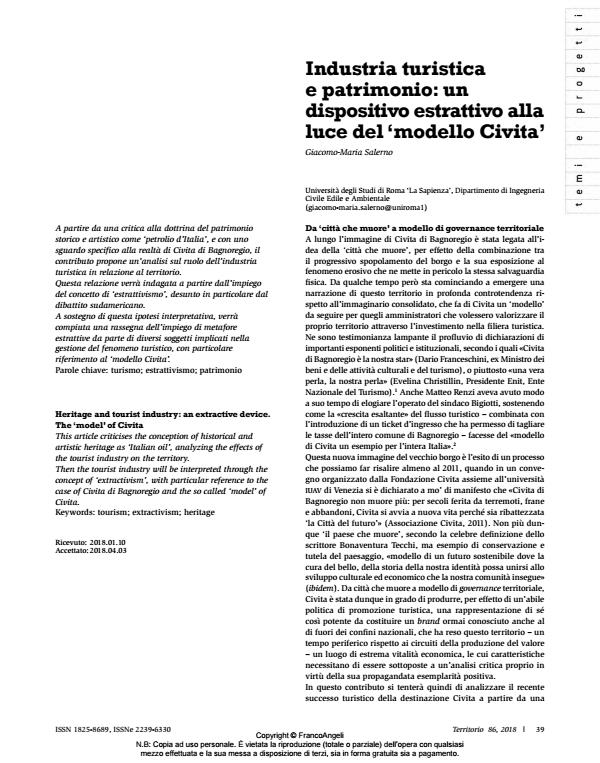Heritage and tourist industry: an extractive device. The ‘model’ of Civita
Journal title TERRITORIO
Author/s Giacomo-Maria Salerno
Publishing Year 2019 Issue 2018/86
Language Italian Pages 9 P. 39-47 File size 654 KB
DOI 10.3280/TR2018-086005
DOI is like a bar code for intellectual property: to have more infomation
click here
Below, you can see the article first page
If you want to buy this article in PDF format, you can do it, following the instructions to buy download credits

FrancoAngeli is member of Publishers International Linking Association, Inc (PILA), a not-for-profit association which run the CrossRef service enabling links to and from online scholarly content.
This article criticises the conception of historical and artistic heritage as ‘Italian oil’, analyzing the effects of the tourist industry on the territory. Then the tourist industry will be interpreted through the concept of ‘extractivism’, with particular reference to the case of Civita di Bagnoregio and the so called ‘model’ of Civita.
Keywords: Tourism; extractivism; heritage
Giacomo-Maria Salerno, Industria turistica e patrimonio: un dispositivo estrattivo alla luce del "modello Civita" in "TERRITORIO" 86/2018, pp 39-47, DOI: 10.3280/TR2018-086005